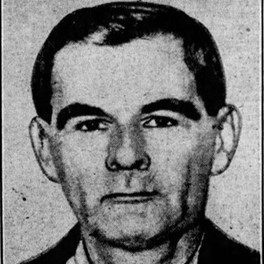
d: 1952
Généreux Ruest
Summary
Name:
Généreux RuestYears Active:
1949Status:
ExecutedClass:
MurdererVictims:
23Method:
BombingDeath:
July 25, 1952Nationality:
Canada
d: 1952
Généreux Ruest
Summary: Murderer
Name:
Généreux RuestStatus:
ExecutedVictims:
23Method:
BombingNationality:
CanadaDeath:
July 25, 1952Years Active:
1949bio
Généreux Ruest was born in 1898 in Quebec, Canada. He grew up in modest circumstances and eventually became a skilled watchmaker. He was known in his community for his precision work, which provided him a stable if unspectacular livelihood. Ruest lived a relatively quiet life and later opened his own watch repair shop, where he serviced damaged timepieces brought in by various customers, including his eventual co-conspirator, Joseph-Albert Guay.
Ruest’s personal life was fairly reserved. He was married and, in the mid-1940s, relocated with his wife to the town of Sept-Îles, where they welcomed a daughter in 1945. It was during this period that his relationship with Guay deepened. The two men shared a business connection in which Guay sold jewelry and watches, often delivering broken items to Ruest for repair. Through these frequent interactions, Ruest also became closely tied to Guay’s personal life.
One of the most influential figures in Ruest’s orbit was his own sister, Marguerite Pitre, a boarding house owner in Quebec City. Known for her gothic appearance and nicknamed “Madame le Corbeau” by neighbors, Pitre played a motherly role in Guay’s life and frequently assisted in his clandestine relationship with a young waitress named Marie-Ange Robitaille.
murder story
In the summer of 1949, Joseph-Albert Guay was fixated on eliminating his wife, Rita Morel, in order to pursue a life with his teenage mistress, Marie-Ange Robitaille. Divorce in Quebec was nearly impossible at the time, especially for someone like Guay, whose infidelities were well-known. Seeking a discreet and irreversible solution, Guay decided on murder, and he needed help.
He turned to two trusted individuals: his close friend and business associate, Généreux Ruest, and Ruest’s sister, Marguerite Pitre.
Guay’s plan evolved from poisoning to bombing. He convinced Pitre to purchase dynamite and explosives components, which she did under a false name. These materials were handed to Guay, who then approached Ruest with a request: build a time bomb.
Ruest agreed. As a watchmaker with intricate mechanical knowledge, he had the necessary expertise to construct a functioning time-delay detonator. He created the bomb using dynamite, fuses, and timing mechanisms, and this device was eventually packed into a suitcase meant for Guay’s wife.
Guay tricked Rita into boarding Canadian Pacific Air Lines Flight 108 on September 9, 1949, under the pretense of reconciling their relationship. The flight was scheduled to go from Montreal to Baie-Comeau with a stop in Quebec City. He also purchased a $10,000 life insurance policy on her the same day. Pitre delivered the suitcase to the airport.
The bomb detonated shortly after takeoff, but a five-minute delay in departure caused the aircraft to crash on land instead of into the Saint Lawrence River, as Guay had intended. The crash at Sault-au-Cochon killed all 23 people on board, including four children and three U.S. executives from the Kennecott Copper Corporation.
Because the plane crashed on land, investigators were able to examine the debris. They quickly determined the explosion had been intentional. A leaked detail in the press mentioned a woman who had checked in a suspicious package. Guay, realizing the pressure was closing in, urged Pitre to take her own life and leave behind a fake suicide note taking full blame. She refused.
Pitre was hospitalized briefly after a failed overdose attempt and later confessed to police that she had delivered a parcel for Guay. She initially claimed she thought it was a statue. Guay was arrested in late September, and while awaiting trial, he reportedly told a jailhouse informant that Ruest had built the bomb. Police questioned Ruest, who admitted to creating the device but said he thought it was intended for blasting tree stumps.
Despite this claim, Ruest was arrested on June 6, 1950, and charged with murder. His trial began in November 1950. The jury had the option to convict him of manslaughter, but they chose to find him guilty of murder. He was sentenced to death by hanging.
In his final months, Ruest suffered from osseous tuberculosis, a painful and debilitating form of the disease. His health declined to the point where he was confined to a wheelchair. On July 25, 1952, he was hanged at Bordeaux Prison in Montreal, the same prison where his co-conspirator Guay had been executed the year before.